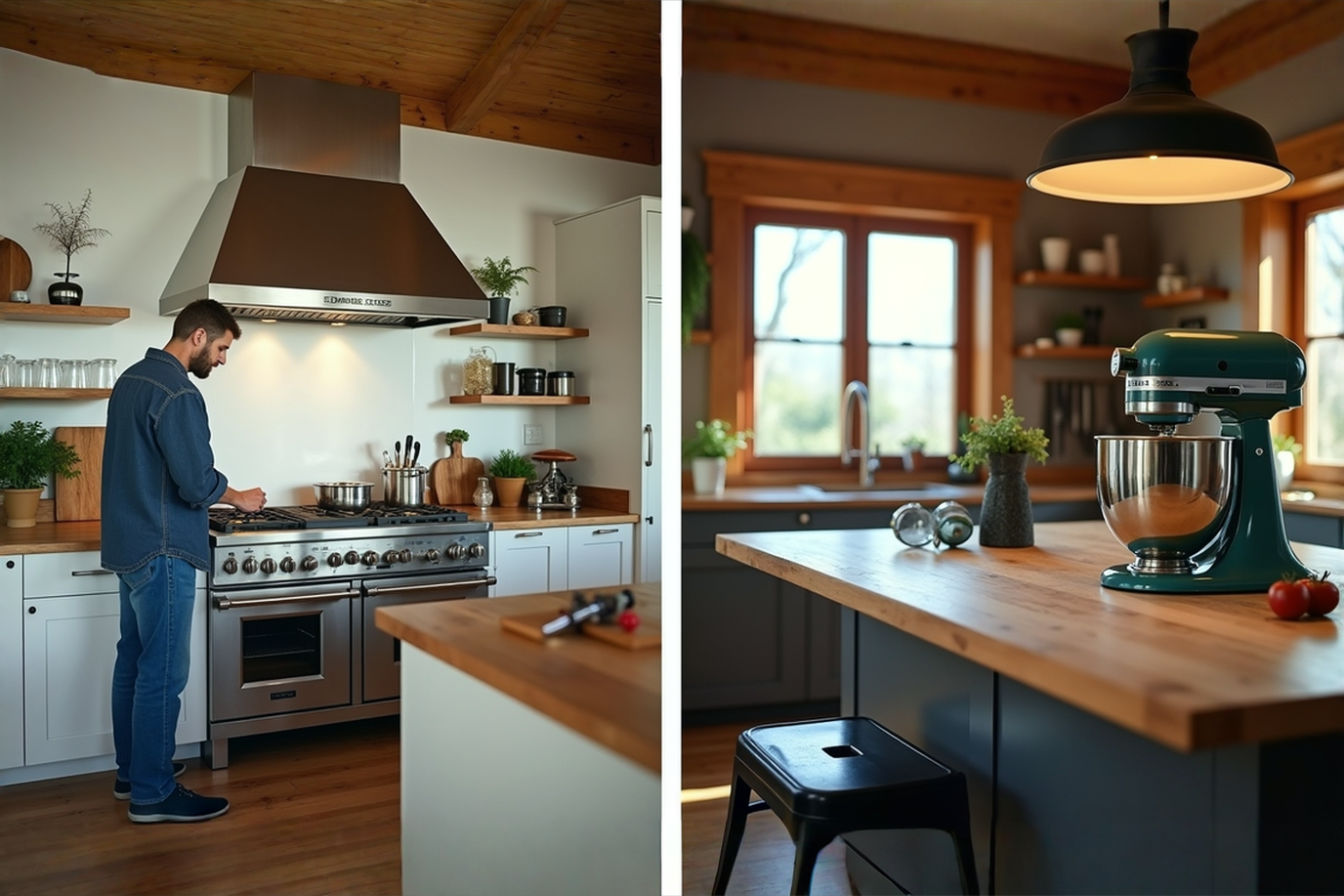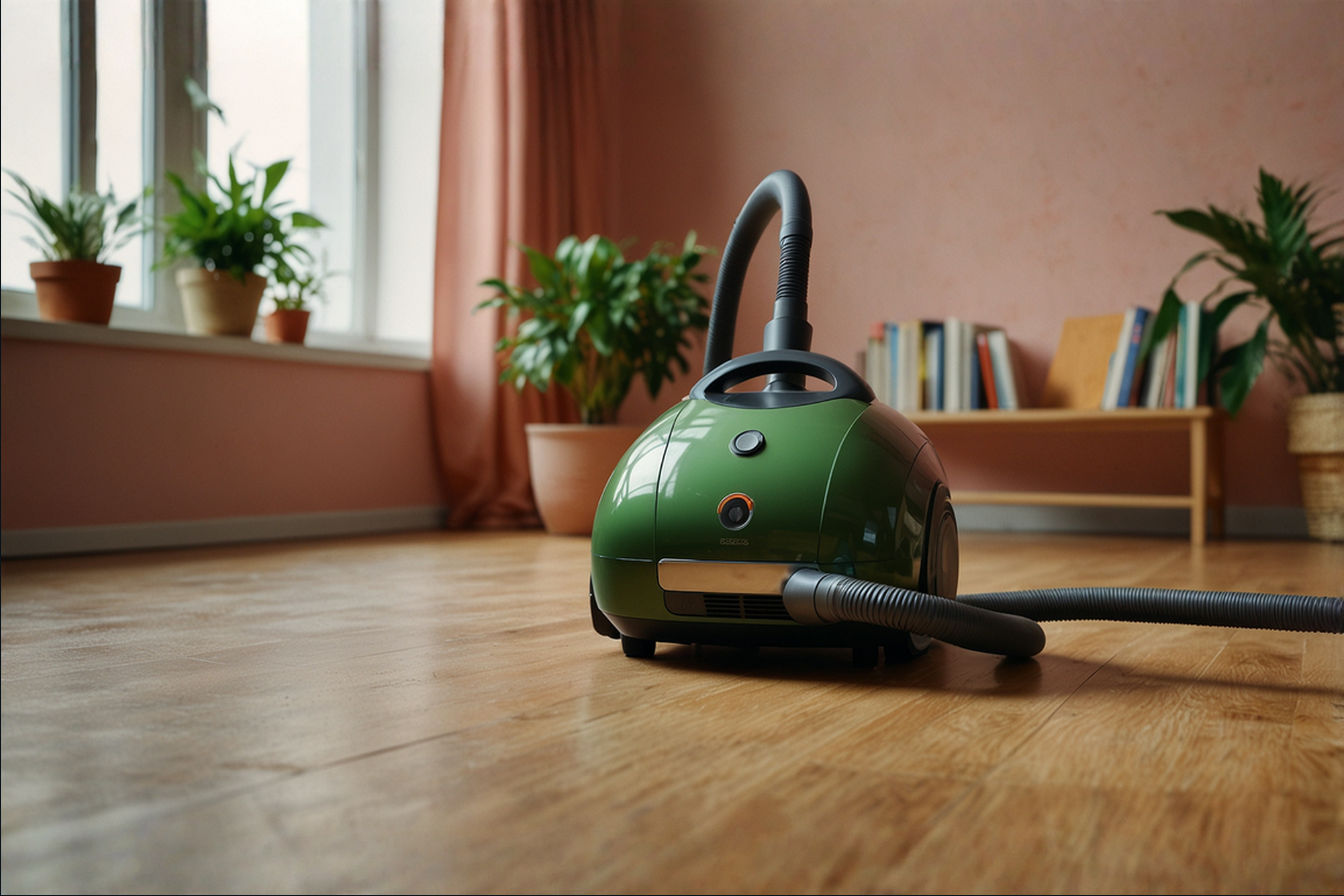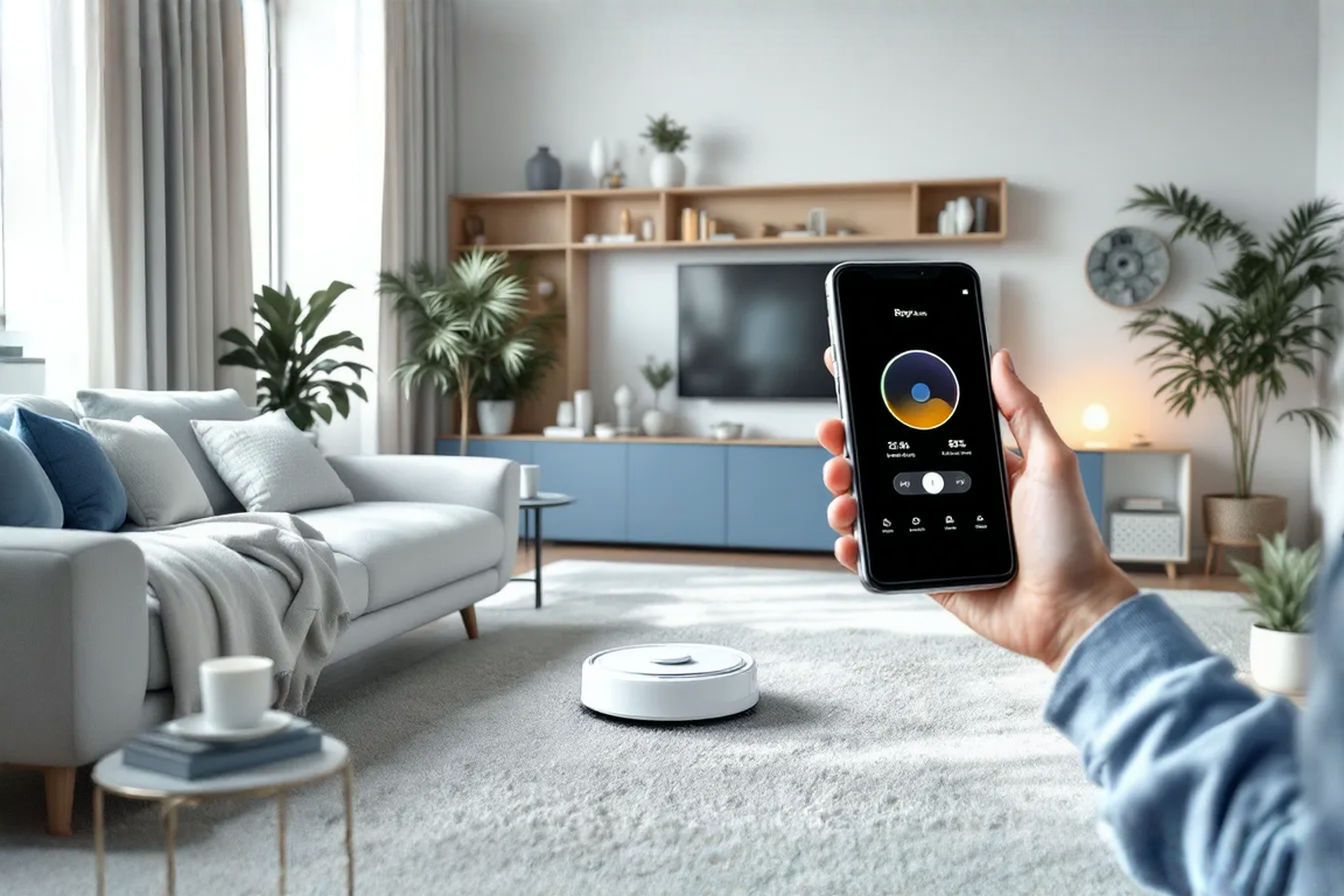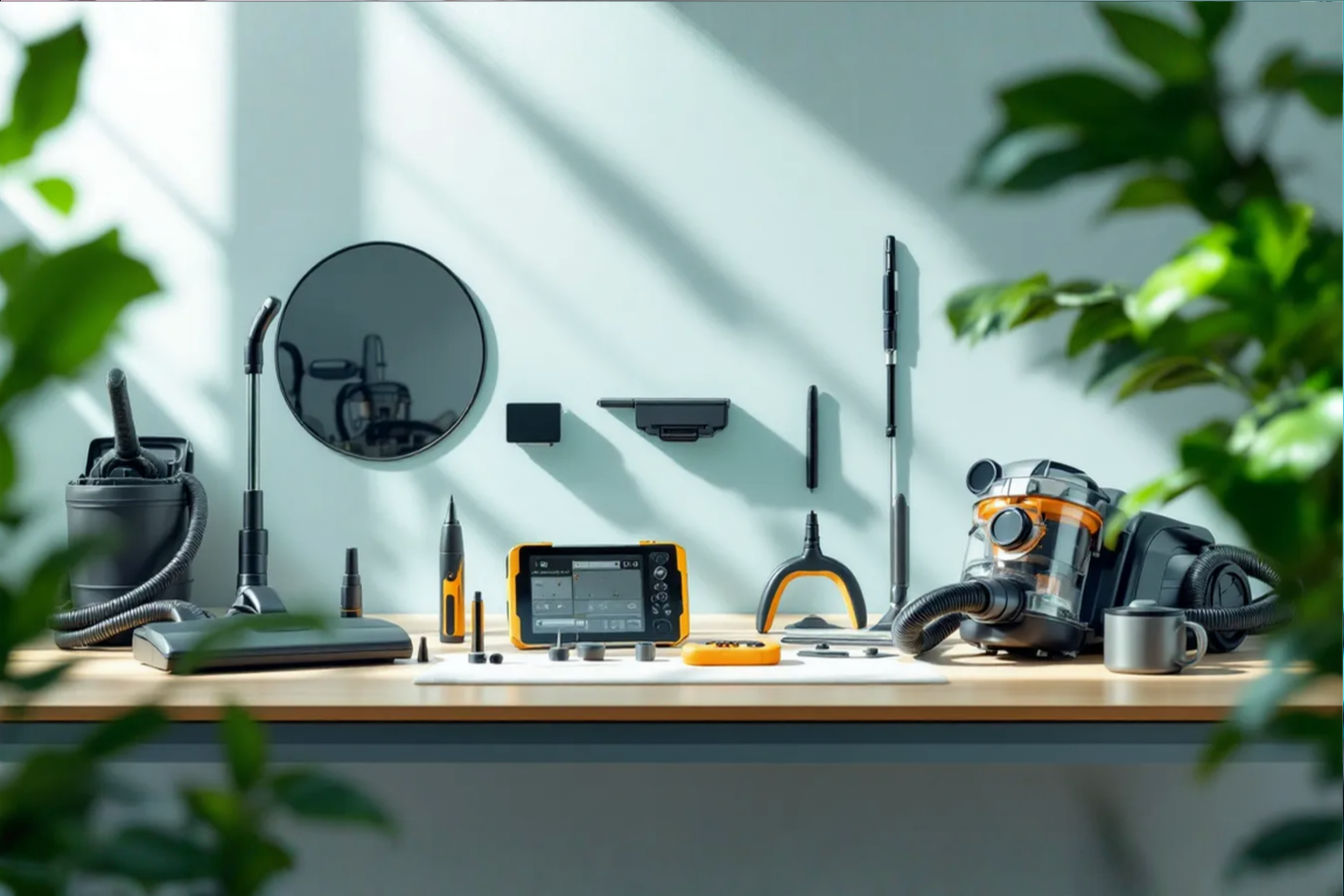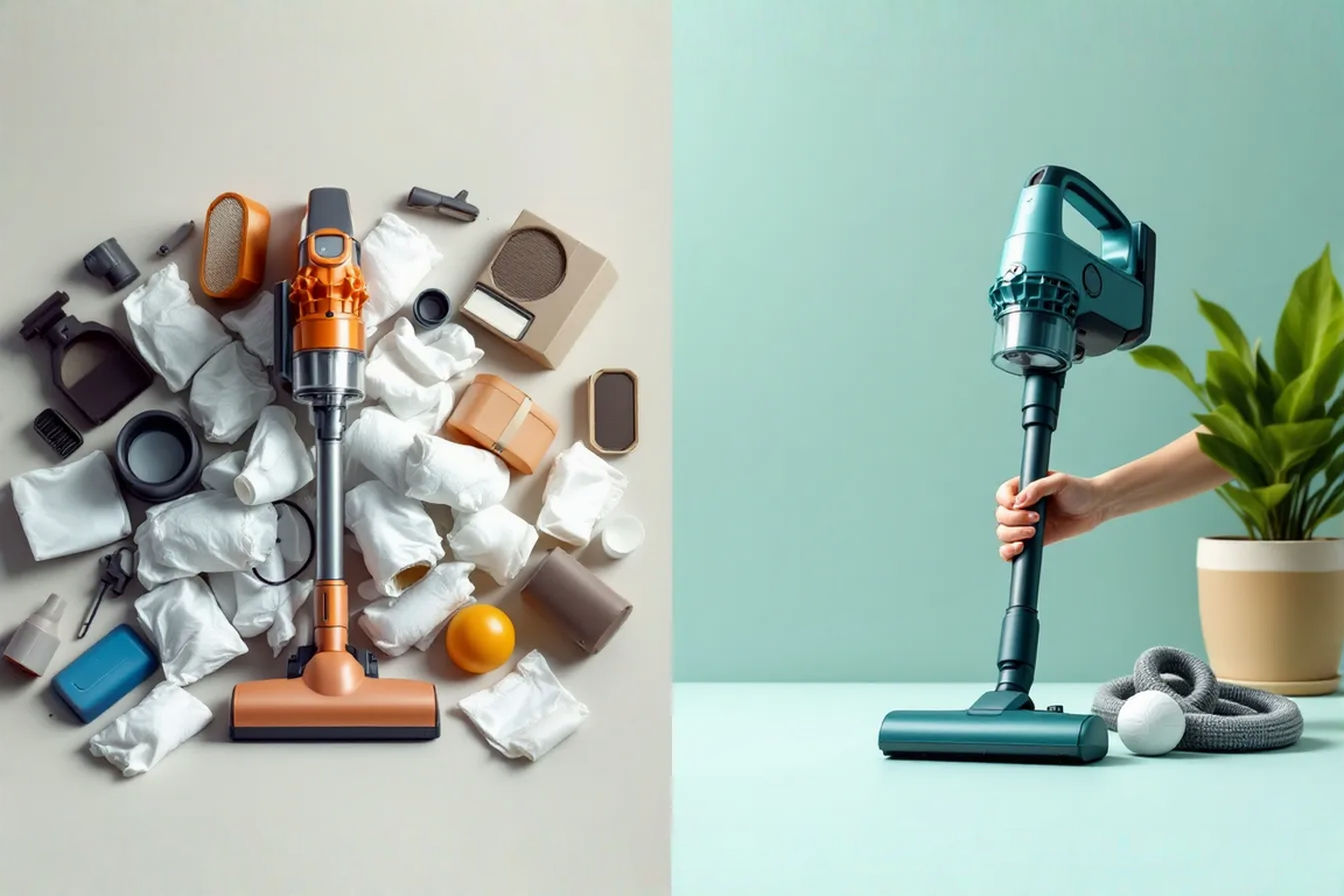Light Commercial Equipment for Home Use: When to Make the Investment
Considering commercial-grade equipment for your home? This guide helps you determine when the investment makes sense, what to look for, and how to avoid costly mistakes when upgrading beyond residential models.
This post may contain affiliate links. If you make a purchase through these links, we may earn a commission at no additional cost to you.
The boundary between professional and residential equipment continues to blur as more homeowners seek commercial-grade performance in their personal spaces. This shift reflects a growing desire for durability, efficiency, and professional results that standard residential products often can’t deliver. Light commercial equipment occupies the sweet spot between consumer-grade products and full industrial machinery, offering enhanced capabilities without requiring a complete infrastructure overhaul.
Understanding when these professional-grade investments make sense requires careful consideration. The higher price tags of commercial equipment demand thoughtful analysis of your actual needs, space considerations, and long-term value proposition. Making the wrong choice can lead to wasted money and space, while the right decision can provide decades of superior performance and potentially lower lifetime costs.
This definitive guide explores the world of light commercial equipment for home use, helping you determine if investing in professional-grade tools and appliances aligns with your needs and circumstances. We’ll examine different equipment categories, analyze key decision factors, and provide a framework for making sound investment choices that you won’t regret.
Understanding Light Commercial Equipment
What Defines Light Commercial Equipment
Light commercial equipment sits in the intermediate zone between residential and full commercial products. These items are engineered to withstand more frequent use and deliver higher performance than typical consumer models but don’t require the specialized infrastructure of industrial equipment. Construction quality serves as the primary differentiator, with commercial-grade products featuring more robust materials, reinforced components, and enhanced cooling systems to handle extended operation.
Professional equipment typically employs commercial-grade motors with higher torque, better thermal management, and longer duty cycles. Internal components often include metal instead of plastic gears, sealed bearings rather than bushings, and circuitry designed for continuous operation. This superior construction translates to equipment that can handle daily use for hours rather than occasional operation for short periods.
Manufacturers design these products for different usage patterns as well. While residential equipment assumes intermittent use with regular rest periods, commercial-grade items expect longer operational sessions and higher workloads. This fundamental design difference affects everything from power requirements to component selection and cooling systems.
The Prosumer Movement
The rise of the “prosumer” – consumers with professional-level expectations – has transformed the equipment marketplace. This growing demographic seeks commercial capabilities without requiring a business location or industrial setting. Driven by serious hobbyists, home-based entrepreneurs, and consumers simply tired of replacing failed residential equipment, this movement has encouraged manufacturers to develop crossover product lines.
These hybrid offerings provide commercial performance characteristics in packages suitable for residential settings. Companies now regularly offer “light commercial” or “prosumer” versions of their professional product lines, with appropriate modifications for home use. This trend appears most prominently in kitchen appliances, fitness equipment, and creative tools where performance differences significantly impact results.
The growth of home-based businesses further accelerates this market evolution. As more professionals operate from home environments, the demand for commercial-capable equipment in residential settings continues to increase. These users require professional results without leasing commercial space, creating strong market pressure for capable yet home-appropriate equipment options.
Common Categories of Light Commercial Equipment for Home Use
Fitness Equipment
Home gyms increasingly feature commercial-grade fitness equipment as fitness enthusiasts seek studio-quality experiences at home. Commercial treadmills offer stronger motors, thicker running decks, and enhanced weight capacity compared to residential models. These machines utilize commercial-grade 3-4 HP continuous-duty motors rather than the 1.5-2.5 HP peak-duty motors found in residential units, enabling longer workouts without overheating.
Professional elliptical trainers feature heavier flywheels, sealed commercial bearings, and welded rather than bolted frames. These enhancements create smoother operation and dramatically improved durability under daily use. Strength training equipment follows similar patterns, with commercial versions using thicker gauge steel, higher weight capacities, and more precise adjustment mechanisms.
Brands like Life Fitness, Precor, and Cybex offer light commercial lines designed specifically for high-end homes, small hotels, and corporate gyms. These products bridge the gap between consumer models and full commercial units found in large fitness centers, providing commercial durability with footprints and power requirements suitable for residential use.
Kitchen Appliances and Cooking Equipment
Serious home cooks increasingly turn to commercial kitchen equipment to achieve restaurant-quality results. Professional-grade ranges offer higher BTU output, more precise temperature control, and construction designed for all-day cooking sessions. These units typically feature all-metal controls, thicker gauges of stainless steel, and components designed for easy service and replacement.
Restaurant-grade refrigeration provides faster temperature recovery, more consistent cooling, and better organization options than standard home models. Professional food processors and mixers utilize direct-drive motors and all-metal gearing systems that can handle thick doughs and continuous operation without strain or overheating.
This category requires careful consideration of space and installation requirements. Commercial ranges often need enhanced ventilation systems, while some professional refrigeration may require dedicated circuits or water lines. Smart buyers investigate these infrastructure needs before purchase to avoid costly surprises during installation.
Lawn and Garden Equipment
Property owners with larger lots often benefit from commercial landscaping equipment. Zero-turn commercial mowers can reduce cutting time by 50% or more compared to residential riders, while providing years of reliable service under conditions that would quickly wear out consumer models. Professional trimmers and blowers operate more efficiently and withstand daily use throughout the growing season.
Commercial landscaping equipment typically features serviceable components rather than sealed units that require complete replacement when they fail. This serviceability means buyers can replace worn bearings, belts or switches rather than the entire machine. The potential for component-level repair significantly extends the practical lifespan of the equipment.
Fuel efficiency often improves with commercial models as well, with better engine designs and more efficient operation offsetting some of the higher initial costs. However, these benefits come with considerations about storage space, maintenance requirements, and in some cases, noise levels that may exceed residential neighborhood preferences.
Workshop and Power Tools
Woodworkers, metalworkers, and serious DIY enthusiasts frequently invest in commercial-grade shop equipment. Cabinet-grade table saws offer superior precision, better dust collection, and vastly improved durability compared to contractor models. Professional drill presses, planers, and jointers provide the accuracy and repeatability necessary for fine craftsmanship.
Commercial air compressors deliver higher CFM (cubic feet per minute) ratings, allowing for continuous operation of air tools without constant cycling. Professional welders offer higher duty cycles and better control systems, enabling precision work on thicker materials than their residential counterparts can handle.
Safety features often improve with commercial models as well, with better guard systems, more responsive shutoffs, and improved ergonomics to reduce operator fatigue. However, these benefits come with additional space requirements, heavier weight, and sometimes three-phase power needs that require electrical upgrades to accommodate.
Other Popular Categories
Light commercial options extend into numerous other categories as well. HVAC systems designed for light commercial use offer better temperature stability, longer lifespans, and more efficient operation than standard residential units. Professional cleaning equipment provides faster work completion and better results for homes with extensive hard flooring or carpet areas.
Home office equipment benefits from commercial-grade durability too. Professional printers handle higher volume without component failure, while commercial shredders process thicker stacks and operate continuously without thermal shutdown. Audio-visual systems in the light commercial category deliver enhanced performance for home theaters and music rooms, with better power handling and thermal management for extended listening sessions.
Each category presents its own set of advantages and considerations. The common thread remains enhanced durability, better performance, and higher initial cost balanced against longer useful life and improved results.
Key Factors to Consider Before Investing
Usage Frequency and Intensity
The most critical factor in determining whether commercial equipment makes sense for home use involves honest assessment of usage patterns. Daily use for extended periods strongly suggests commercial equipment would provide value, while occasional weekend use rarely justifies the additional investment.
Consider realistic usage thresholds that warrant commercial-grade purchases. A home baker who produces multiple items daily for a small business logically benefits from a professional mixer, while someone who bakes monthly for family gatherings would likely find a high-end residential model sufficient. Similarly, a homeowner maintaining five acres of land would save significant time and money with a commercial zero-turn mower, while someone with a quarter-acre lot would find commercial equipment excessive.
Avoid aspirational purchasing when considering commercial equipment. The treadmill you’ll “definitely use every day” often becomes an expensive clothes rack if that pattern doesn’t already exist with your current equipment. Commercial equipment makes the most sense when it solves existing problems or addresses established patterns rather than anticipated future behaviors.
Total Cost of Ownership Analysis
Making smart investment decisions requires looking beyond the initial purchase price to consider the total cost of ownership over the equipment’s lifespan. This analysis includes initial cost, expected lifespan, maintenance expenses, energy consumption, and eventual resale value.
Commercial equipment typically costs 2-5 times more than residential versions initially but may last 3-10 times longer under similar use conditions. This longevity stems from more robust construction, serviceable components, and designs intended for repair rather than replacement. A commercial treadmill might cost $4,000 compared to $1,500 for a residential model but typically lasts 7-10 years of daily use versus 2-3 years for the residential unit.
Maintenance costs vary significantly by category. Some commercial equipment requires more frequent professional maintenance, increasing operational costs. However, many commercial items feature modular designs that make repairs simpler and less expensive when needed. Replacement parts generally remain available much longer for commercial models, extending useful life beyond what residential equipment can achieve.
Energy consumption deserves careful consideration as well. Commercial equipment sometimes requires more power to deliver higher performance, potentially increasing utility costs. However, many commercial models actually operate more efficiently at their intended work levels than residential units operating at their maximum capacity, potentially saving energy during actual use.
Space and Installation Requirements
Commercial equipment typically demands more space than residential alternatives, requiring careful space planning before purchase. Beyond simple footprint considerations, factors like clearance for operation, ventilation requirements, and access for maintenance all affect space needs.
Weight considerations matter significantly for multi-level homes. Commercial equipment often weighs substantially more than residential versions, potentially requiring structural reinforcement before installation. A commercial treadmill might weigh 400 pounds compared to 200 for a residential model, while a commercial range could double the weight of a standard residential unit.
Utility requirements frequently exceed standard residential provisions. Commercial kitchen equipment might require 220V power, enhanced gas lines, or commercial-grade ventilation systems. Workshop equipment often needs dedicated circuits, dust collection systems, or compressed air networks to function properly. These infrastructure needs add to the total project cost and may require professional installation.
The distinction between permanent and movable installations affects both initial setup and future flexibility. Built-in commercial appliances may add significant value to a home but can’t be relocated if needs change. Freestanding equipment offers more flexibility but might sacrifice some performance attributes of fully integrated systems.
Technical Knowledge and Learning Curve
Commercial equipment often presents a steeper learning curve than residential models. Operational complexity increases with additional features and capabilities, requiring time investment to achieve proficient use. This complexity ranges from additional settings and maintenance procedures to completely different operational approaches.
User manuals and support resources vary widely in quality and availability. Some manufacturers provide excellent documentation and training materials, while others assume operator familiarity with commercial equipment. Before purchasing, investigate the availability of clear instructions, video tutorials, and responsive customer support to ensure you can fully utilize the equipment’s capabilities.
Maintenance requirements typically increase with commercial equipment, necessitating either technical skills development or budget allocation for professional service. Some equipment requires specialized tools or diagnostic equipment to maintain properly. Establish whether you have the interest and aptitude to learn these skills or the budget to outsource maintenance before investing.
Advantages of Light Commercial Equipment at Home
Performance Benefits
The most immediately noticeable advantage of commercial equipment involves superior performance capabilities. Professional kitchen equipment cooks more evenly with better temperature control, while commercial shop tools cut more precisely and handle larger materials. These performance improvements often transform the quality of the end product, whether that’s a meal, woodworking project, or lawn maintenance.
Consistency and reliability represent significant benefits as well. Commercial equipment maintains performance levels throughout extended operation instead of degrading as components heat up. This consistency matters particularly for projects requiring precision or specific outcomes that depend on stable equipment performance.
Volume handling capabilities enable tasks impossible with residential equipment. A commercial food processor can handle double or triple batches without straining, while a professional-grade saw can cut thicker hardwoods that would stall a residential model. This capacity allows users to take on larger projects or complete work more efficiently.
The professional-quality results achievable with commercial equipment often justify the investment for serious hobbyists and home-based professionals. When the outcome quality directly impacts satisfaction or income, the performance advantages of commercial equipment provide tangible value.
Durability and Longevity Advantages
Commercial equipment’s most significant financial advantage stems from its extended operational lifespan. Constructed with higher-grade materials and components designed for thousands of hours of operation, these products typically outlast residential versions by years or even decades under similar use conditions.
Component serviceability drastically extends useful life as well. While many residential products use sealed systems requiring complete replacement upon failure, commercial equipment generally allows for component-level repair. This repairability means a single failed part doesn’t render the entire machine obsolete, reducing waste and replacement costs.
Replacement parts availability typically extends much longer for commercial models. Manufacturers maintain parts inventories for commercial equipment for 10-15 years or more, compared to 3-5 years for many residential products. This extended support means a 10-year-old commercial appliance can often be repaired while a 5-year-old residential version might be unrepairable due to parts unavailability.
Real-world examples demonstrate this longevity advantage clearly. Commercial treadmills commonly remain in service for 7-10 years of daily use, compared to 2-3 years for residential models under similar conditions. Professional ranges routinely operate effectively for 15-20 years, while many residential units require replacement after 7-10 years. This extended service life dramatically impacts the total cost calculation when making investment decisions.
Financial Benefits
The long-term cost efficiency of commercial equipment often outweighs higher initial prices. A commercial appliance costing twice as much but lasting three times as long represents a better value, even before considering better performance and lower repair frequency. Cost amortization over the extended lifespan typically favors commercial equipment for items seeing regular use.
Tax advantages may apply for home-based businesses using commercial equipment. Depending on your situation, accelerated depreciation and business equipment deductions could significantly reduce the effective cost of commercial purchases. Consult a tax professional to understand how these advantages might apply to your specific circumstances.
Higher resale value provides another financial benefit. Quality commercial equipment often retains 30-50% of its value after several years of use, compared to 10-20% for residential models. This value retention improves the total cost calculation and provides more flexibility if needs change in the future.
Fewer replacement cycles reduce both financial costs and the environmental impact of equipment disposal. Buying one commercial item that lasts 15 years instead of replacing a residential version every 5 years reduces waste and eliminates the hassle and disruption of frequent replacements.
Potential Drawbacks to Consider
Financial Considerations
The significant upfront investment required for commercial equipment presents the most obvious drawback. Initial costs typically range from double to quintuple the price of residential alternatives, creating a substantial financial hurdle. This higher entry price demands careful analysis of long-term value and realistic assessment of actual needs.
Insurance implications sometimes arise with commercial equipment installation. Some home insurance policies exclude coverage for commercial equipment or charge higher premiums when it’s present. Check with your insurance provider before purchase to understand any policy implications or additional coverage requirements.
Financing options differ from standard consumer purchases in some cases. Commercial equipment might not qualify for promotional financing offers available on residential models, potentially increasing the effective cost. However, business equipment loans might be available at favorable rates for home-based business applications, potentially offsetting this disadvantage.
Resale market limitations affect some specialized equipment categories. While common items like fitness equipment and kitchen appliances have robust secondary markets, highly specialized tools might prove difficult to sell if needs change. Consider the potential exit strategy before investing in niche commercial equipment with limited resale demand.
Practical Limitations
Noise levels frequently increase with commercial equipment, creating potential conflicts in residential settings. Sound isolation requirements add cost and complexity, particularly in attached housing or neighborhoods with noise restrictions. Some equipment may simply prove too loud for reasonable residential use, regardless of mitigation efforts.
Aesthetic concerns arise with equipment designed primarily for function rather than appearance. Commercial models often feature utilitarian designs that may conflict with residential décor preferences. While this factor seems superficial, the visual impact of equipment in living spaces affects daily satisfaction with the purchase decision.
Space limitations present practical challenges for many homeowners. Commercial equipment’s larger footprint consumes valuable square footage that might serve multiple purposes in residential settings. This space commitment represents an ongoing cost that should factor into the decision-making process.
Utility costs sometimes increase with commercial equipment operation. Higher power consumption, specialized ventilation requirements, or increased water usage can raise monthly operating expenses. These ongoing costs must factor into the total cost analysis when comparing residential and commercial options.
Maintenance Realities
Finding qualified service technicians sometimes proves challenging for commercial equipment in residential areas. Service availability varies widely by region and equipment category, potentially leading to longer downtime when repairs are needed. Research local service options before purchasing to avoid frustrating delays when maintenance is required.
DIY maintenance complexity increases with commercial models in many cases. While designed for serviceability, these systems often require specialized knowledge and tools to maintain properly. Determine whether you have the interest and aptitude to learn these skills or budget for professional service as part of ownership costs.
Parts availability challenges occasionally arise for residential owners of commercial equipment. Some manufacturers limit parts sales to authorized service providers, complicating DIY repairs. Additionally, older commercial models might require specialty parts not stocked by local suppliers, increasing repair delays and shipping costs.
Warranty coverage typically differs from residential equipment, sometimes offering shorter terms but covering commercial use patterns excluded from residential warranties. Understand what’s covered, exclusions, and service procedures before purchase to avoid surprises when warranty service is needed.
Making the Right Decision
When Commercial Equipment Is Worth the Investment
Clear indicators suggest when commercial equipment represents a sound investment. Daily use for extended periods tops this list—equipment operated several hours daily almost always justifies commercial-grade durability. Similarly, pushing residential equipment to failure repeatedly indicates commercial alternatives would provide better value despite higher initial costs.
Income-producing activities strengthen the case for commercial equipment. When equipment directly generates revenue through a home business or side hustle, the performance and reliability benefits often outweigh the additional costs. The tax advantages available for business equipment further improve the value proposition in these scenarios.
Return on investment calculations should consider both tangible and intangible factors. Beyond simple financial calculations, consider time savings, reduced frustration, improved results, and increased capabilities when evaluating commercial equipment. These quality-of-life improvements often provide substantial value difficult to quantify in purely monetary terms.
Future needs assessment helps prevent premature obsolescence. When current usage patterns show growth trends, commercial equipment’s additional capacity may prevent another upgrade cycle, potentially saving money despite higher initial costs.
When to Stick with Residential Equipment
Several warning signs indicate when commercial equipment would represent an unnecessary expense. Occasional or infrequent use rarely justifies commercial-grade durability or performance. If you use equipment weekly or less, residential models typically provide better value unless specific performance requirements can’t be met with consumer products.
Spatial limitations present another reason to choose residential models. When installation would require significant home modifications or compromise living space functionality, the total project cost often outweighs the benefits. Similarly, if providing adequate power, ventilation, or other infrastructure would require substantial investment, the overall value proposition may favor residential alternatives.
High-end residential equipment often provides a sensible middle ground between standard consumer products and full commercial models. These premium residential offerings incorporate some commercial-inspired features and improved durability without requiring specialized installation or maintenance. For many users, these products hit the sweet spot of performance and practicality.
Conducting a realistic self-assessment prevents costly mistakes. Ask yourself: “Am I being honest about how frequently I’ll use this equipment?” and “Do I have the space, infrastructure, and maintenance resources to support this purchase?” Truthful answers to these questions often lead to more satisfying long-term outcomes than aspirational thinking.
Buying Strategies
The new versus used decision affects both cost and reliability. Quality used commercial equipment often provides exceptional value, particularly for items with simple mechanical systems and long lifespans. However, complex electronic equipment or items with heavy wear components may prove problematic when purchased used. Research typical failure points before deciding whether used equipment represents a bargain or a potential problem.
Dealer relationships provide significant value for commercial equipment purchases. Established dealers offer expertise, installation support, maintenance services, and warranty assistance that can outweigh potential savings from direct purchases. These relationships prove particularly valuable for equipment categories requiring specialized knowledge or regular service.
Negotiation leverage increases with commercial equipment purchases due to higher margins and more flexible pricing structures. Don’t hesitate to request better terms, extended warranties, free delivery, or installation assistance when making significant investments. Timing purchases near quarter or year-end often increases dealers’ willingness to offer concessions to meet sales targets.
Warranty and service contract considerations warrant careful attention. Standard warranties vary dramatically between manufacturers and equipment categories. Evaluate extended service options based on repair frequency, typical repair costs, and your personal risk tolerance. For complex equipment with specialized repair requirements, service contracts often provide value through predictable maintenance costs and priority service.
Conclusion
Investing in light commercial equipment for home use requires balancing practical considerations against performance benefits and long-term value. The decision ultimately depends on your specific circumstances, usage patterns, and performance requirements rather than universal rules. By thoroughly analyzing your actual needs, space limitations, and financial considerations, you can make informed choices that provide lasting satisfaction.
Commercial equipment delivers undeniable advantages in durability, performance, and long-term value for the right applications. Frequent users and those requiring professional-level results often find the higher initial investment amply rewarded through extended equipment life and superior capabilities. However, occasional users or those with space limitations typically find better value in residential or prosumer alternatives.
The most successful purchasing decisions balance wants against needs with honest self-assessment. By focusing on how you’ll actually use equipment rather than aspirational scenarios, you can invest wisely in tools and appliances that provide genuine value for your specific situation. Whether that means commercial-grade equipment or high-end residential models, thoughtful analysis leads to purchases you’ll appreciate for years to come.

